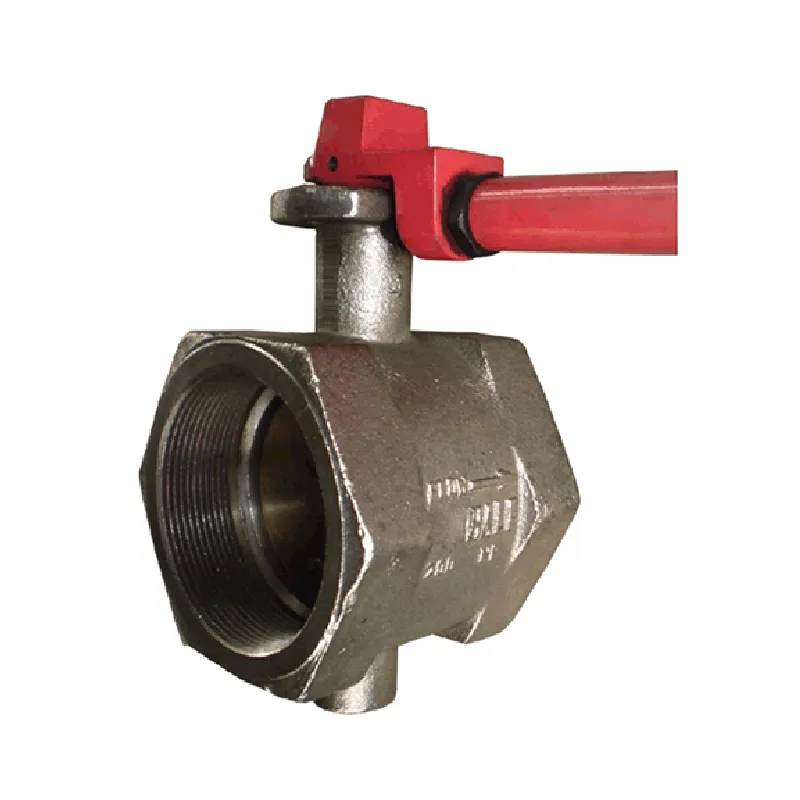Nov . 30, 2024 07:19 Back to list
Understanding the Functionality and Applications of Ball Check Valves in Fluid Systems
Understanding Ball Check Valves Mechanism, Applications, and Benefits
Ball check valves are essential components in various fluid handling systems, providing reliable prevention of backflow in pipelines. These valves are known for their simple yet effective design, which utilizes a spherical ball to block the reverse flow of liquids or gases. This article will delve into the mechanism, applications, and benefits of ball check valves, emphasizing their significance in modern plumbing and industrial systems.
Mechanism of Ball Check Valves
The primary function of a ball check valve is to allow fluid flow in one direction while preventing it from flowing backwards. The valve consists of a few critical components a housing, a ball (usually made from materials like stainless steel, brass, or plastic), and a seat. When fluid flows through the valve in the intended direction, the ball is pushed away from the seat, allowing free passage. However, if the fluid attempts to flow in the reverse direction, the ball is forced against the seat by the pressure, effectively sealing the valve and stopping backflow. This self-acting mechanism is what makes ball check valves highly reliable and efficient in various applications.
Applications of Ball Check Valves
Ball check valves are utilized in a wide range of industries, including
1. Water Supply Systems In municipal and domestic water supply systems, ball check valves prevent water from returning to the source, ensuring that clean water is kept uncontaminated.
3. HVAC Systems In heating, ventilation, and air conditioning systems, ball check valves help maintain proper fluid flow and prevent backflow, ensuring the efficiency of the system.
4. Wastewater Management Ball check valves are critical in wastewater treatment facilities, where they prevent sewage from flowing back into treatment tanks, safeguarding both the environment and public health.
ball check valve

5. Industrial Processes Many manufacturing processes require the use of ball check valves to control the flow of various liquids and gases, ensuring safety and efficiency.
Benefits of Ball Check Valves
The advantages of using ball check valves are manifold. Here are some key benefits
1. Reliability The straightforward mechanism of ball check valves ensures consistent performance over time. They do not have any moving parts that can wear out, making them highly durable under various conditions.
2. Minimal Maintenance Ball check valves require little maintenance, which can lower operational costs and downtime in systems where they are installed.
3. Versatility These valves can handle a wide range of fluids, including water, oil, gas, and various chemicals, making them suitable for diverse applications across different industries.
4. Compact Design Their compact structure is beneficial for applications where space is limited, allowing for easy installation in confined areas.
5. Cost-Effective Compared to other types of check valves, ball check valves tend to be a more economical solution. Their longevity and low maintenance requirements contribute to overall cost savings.
Conclusion
In conclusion, ball check valves play a crucial role in preventing backflow in fluid systems, ensuring safety and efficiency across a variety of applications. With their reliable mechanism, minimal maintenance needs, and versatility, these valves are indispensable in modern plumbing and industrial processes. As technology evolves and the demand for efficient fluid management continues to grow, ball check valves will remain a fundamental component in managing fluid systems effectively. Understanding their importance can help engineers and operators make informed decisions in the design and maintenance of their fluid handling systems.
Share
-
Reliable Wafer Type Butterfly Valves for Every IndustryNewsJul.25,2025
-
Reliable Flow Control Begins with the Right Ball Check ValveNewsJul.25,2025
-
Precision Flow Control Starts with Quality ValvesNewsJul.25,2025
-
Industrial Flow Control ReliabilityNewsJul.25,2025
-
Engineered for Efficiency Gate Valves That Power Industrial PerformanceNewsJul.25,2025
-
Empowering Infrastructure Through Quality ManufacturingNewsJul.25,2025